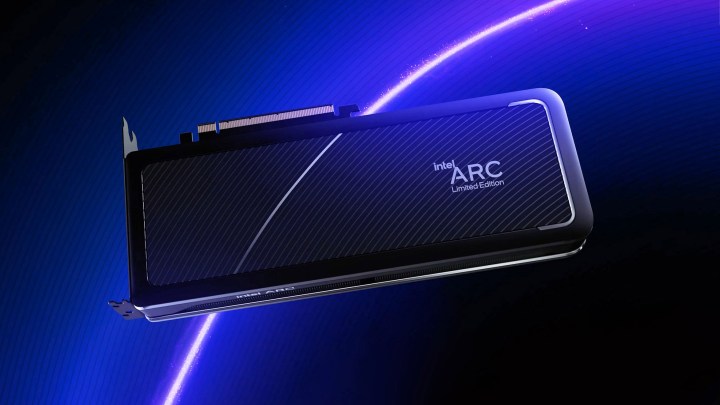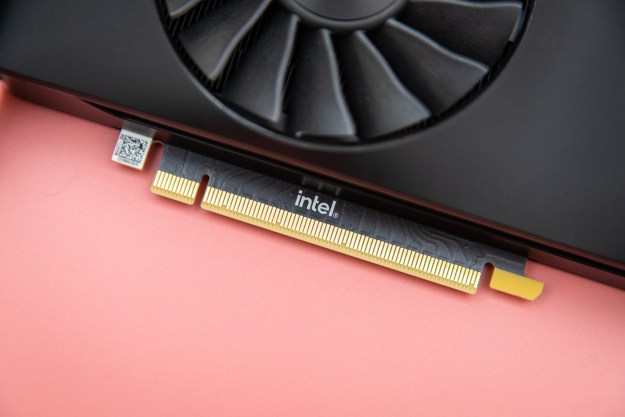Intel has revealed that it plans to compete against, and beat, the Nvidia GeForce RTX 3060 with its upcoming Arc Alchemist graphics cards. However, it knows that in terms of performance, the best it can hope for is trading blows in some games.
To combat Nvidia and AMD, Intel is preparing a different approach, and it seems fully committed to its discrete graphics card line. Will that be enough to keep the GPUs afloat?
Arc Alchemist trades blows with Nvidia, but not always

Intel’s Arc experts Ryan Shrout and Tom Petersen have been candidly promoting the graphics cards for a while now. There have been several videos talking about the GPUs, and Shrout and Petersen even met up with Linus Tech Tips to talk about the cards. This time, the duo spoke to Jacob Ridley of PC Gamer and shared Intel’s intentions for the flagship Arc A770 as well as its close second, the Arc A750.
The Arc A770 and Arc A750 will both use the same A-G10 GPU die, but the A770 will come with the full set of 32 Xe cores, while the A750 receives a cut-down version with 28. Nevertheless, it should be close in performance to its slightly more powerful sibling, and Intel continues to aim to beat — or match — Nvidia’s RTX 3060 with these two GPUs.
To that end, Tom Petersen teases that in games that were optimized to run on Intel Arc, the performance will be “significantly above a [RTX] 3060.” This was said in relation to the Arc A750, meaning that the A770 would offer even better performance.
Of course, this only applies to DirectX 12 titles. Petersen and Shrout have made it clear that the graphics card does a good job with DX12 and Vulkan, but when it comes to older APIs like DX11 and DX9, it can struggle. Petersen admits this again by saying, “When you add in DX11, you’re gonna see our performance is a little less trading blows, and we’re kind of behind in some cases, ahead in some cases, but more losses than wins at DX11.”
DirectX 9 support has been taken care of by outsourcing it all to Microsoft. When it comes to DX11, Intel plans to continue optimizing titles and slowly chipping away at the issue, but it doesn’t hide that it initially hoped to target a higher performance segment than what it will really be able to achieve.
“I was hoping that we would be coming in with a little bit higher performance, but the truth is, this is where we are today,” Petersen told PC Gamer. “The good news for consumers is that we’re going to make sure that this product is very competitive.”
When Petersen says competitive, he doesn’t necessarily mean the performance, although we might indeed see something that could trade blows with the RTX 3060 — instead, he’s referring to the performance per dollar factor. In other words, Intel plans to beat Nvidia not in terms of pure numbers, but in terms of how cheap its cards are going to be in comparison.
We’ve already heard this before, but it’s always good to see it reiterated. With that said, Intel still hasn’t revealed how much the GPU will cost or when it will be available. It has, however, stressed its commitment to the technology that reaches far beyond this current Intel Arc Alchemist version.
Intel’s plans reach far into the future

There have been rumors about Intel possibly choosing to give up on its discrete GPUs and shift focus away from graphics cards, but Petersen assured PC Gamer that this won’t be the case.
“I’d just like to be clear: We’re not going anywhere,” said Petersen. “Graphics is a critical technology to the client, is a critical technology to the data center, and we want to start competing in the mainstream area where our competitors are making a ton of money. So all three of those things are critically important for Intel.”
Once Intel Arc Alchemist comes and goes, the company has already planned a whole line of successors, and Intel now reveals that the majority of its engineers are already working on Battlemage — the immediate follow-up to Arc Alchemist, slated for an ambiguous 2023-2024 release. After Battlemage, there are also Celestial and Druid, sometime in the even more distant future.
It’s hard not to appreciate Intel’s candid approach to the matter of Arc Alchemist. It’s not going to be easy for the giant to win the hearts of current Nvidia and AMD customers, though — and it’d really be better if it would strike sooner rather than later, what with Nvidia GeForce RTX 4000 and AMD RDNA 3 on the imminent horizon.
Editors' Recommendations
- Intel may fire the first shots in the next-gen GPU war
- Intel may be throwing away an important opportunity
- Intel may already be conceding its fight against Nvidia
- How to watch Nvidia’s launch of the RTX 4000 Super today
- What AMD needs to do to beat Nvidia in 2024



